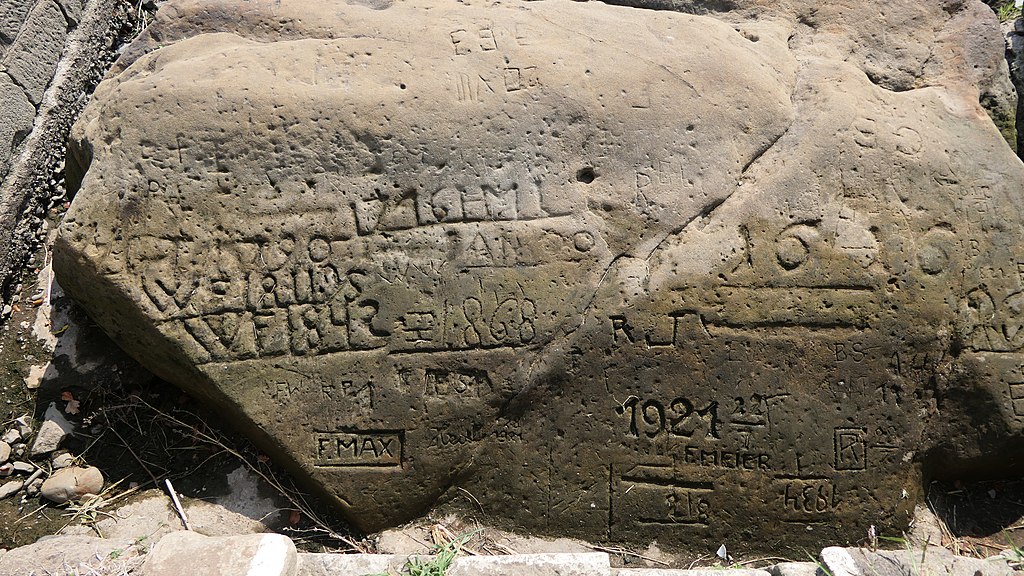As rivers, lakes, and reservoirs are drying up around the world because of droughts, unusual sights are appearing. From Nazi warships to dinosaur footprints to ancient cities and monuments, the dry weather is revealing items long hidden underwater.
With Europe facing its worst drought in hundreds of years, water levels in rivers have dropped severely. In many places, this has revealed “hunger stones”. These stones, normally underwater, have dates carved on them marking other times when the water was low enough to reveal them.

(Source: Dr. Bernd Gross [CC BY-SA 3.0 DE], via Wikimedia Commons.)
The Danube River runs through Serbia, and in many places the water has become very shallow. Near Prahovo, in eastern Serbia, the low water has revealed over 20 German warships that were sunk in 1944.
The ships were carrying bombs and other explosives that are now causing problems in modern-day Serbia. Removing the ships and weapons so they don’t put current ships in danger will cost the Serbian government about $30 million.
In China, the water levels in the Yangtze River have also dropped greatly. Now the waters have fallen so low that they have revealed an entire island, called Foyeliang. On the island, three Buddhist statues have been found, carved in the rock. The statues are believed to be about 600 years old.
😕
This image has not been loaded because of your cookie choices. To view the content, you can accept 'Non-necessary' cookies.
In China, the water levels in the Yangtze River have also dropped greatly. Now the waters have fallen so low that they have revealed an entire island, called Foyeliang (not shown). Above, dried mud in the Yangtze river bed.
In Iraq, a long-term drought has revealed the 3,400-year-old city of Kemune. Much of the ancient city is visible now because of the extremely low water levels in the Mosul reservoir.
A team of German and Kurdish scientists made quick plans to study the site while the water level remained low. They were able to create a detailed plan of the city and discovered some important storage buildings. In one of the buildings they discovered clay tablets with ancient writing on them.

(Source: ©Universities of Freiburg and Tübingen, KAO.)
The team had to cover their research site with plastic as water levels rose enough to cover the city again.
In Spain, a recent study suggests that this is the driest it’s been in 1,200 years. That has revealed a special monument that’s four to five thousand years old. The monument is called the “Dolmen of Guadalperal” and it’s made of large stones standing upright in a circular pattern.
It’s sometimes called the “Spanish Stonehenge” because it looks like England’s famous Stonehenge site. Since 1963, it’s only been dry enough to see the full site four times.

(Source: Pleonr [CC BY-SA 4.0], via Wikimedia Commons.)
The severe drought in Texas has revealed what may be the oldest items that had been hidden underwater – dinosaur footprints from 113 million years ago. The drought has almost completely dried up a river that runs through the Dinosaur Valley State Park in Texas.
As a result, people were able to spot dinosaur footprints in the river bed. Stephanie Salinas, who works at the park, told CNN that most of the footprints were made by an Acrocanthosaurus, which was probably about 15 feet (4.6 meters) tall, and weighed nearly 14,000 pounds (6,350 kilograms).
But the drought also revealed footprints of a Sauroposeidon at the park. That’s a dinosaur that was about 60 feet (18.3 meters) tall and weighed about 88,000 pounds (39,900 kilograms).
Note: This article has been updated to correctly reflect that Kemune is in Iraq, not Iran.
